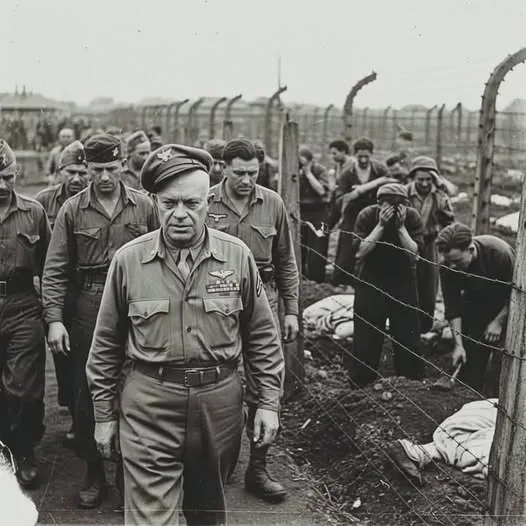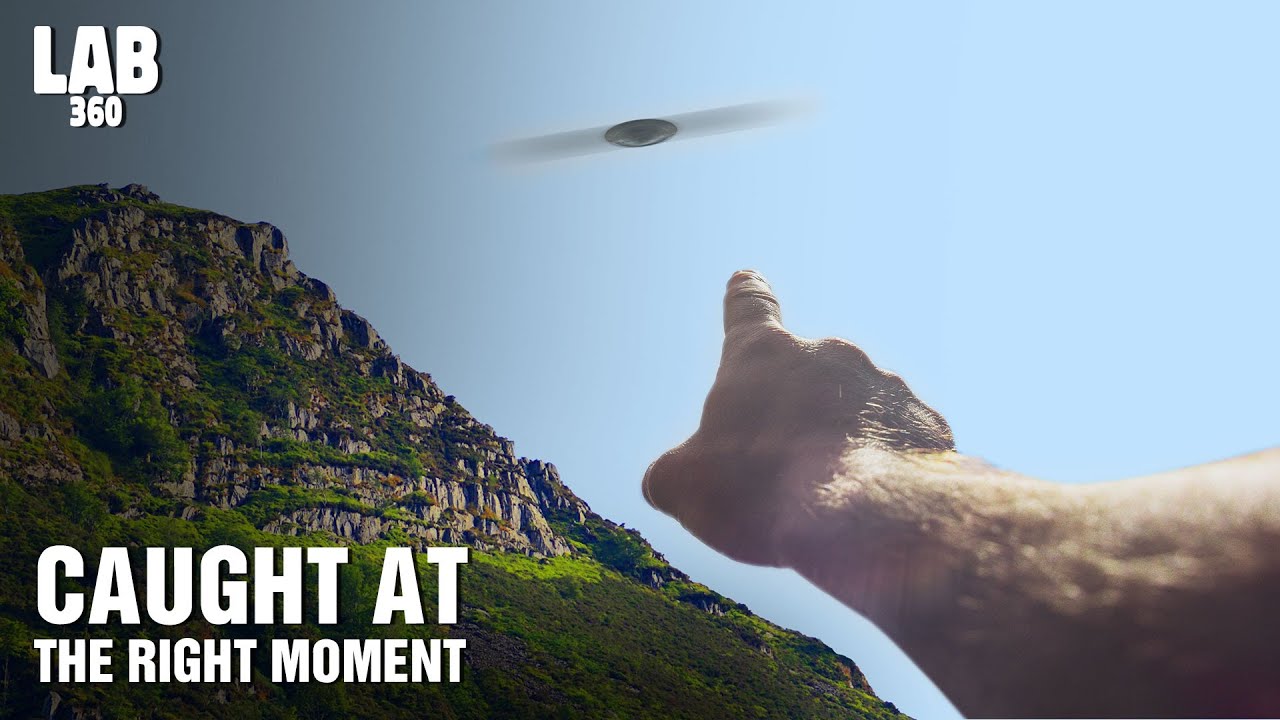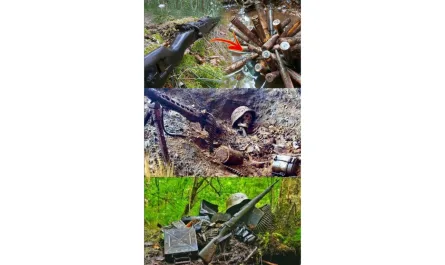April 12, 1945 –Ohrdruf-Nord, sub-camp of Buchenwald, Germany
The wind carried the smell first: sweet-rot, lime, and smoke that would not wash out of uniforms for weeks. Eisenhower stepped down from the jeep without a word. His driver, Kay Summersby, stayed behind; she would later say she had never seen his face that color—ash-gray under the five-star helmet.

He walked alone between the rows of bodies.
Some were arranged like firewood, arms and legs interlaced to save space. Others had been hastily burned when the SS tried to erase evidence; half-charred torsos still wore striped rags fused to the bone. A pyramid of corpses (perhaps thirty) lay where the guards had made prisoners build it as a warning. Eisenhower stood in front of it longer than any man should have to.
General Patton arrived late, took one look, and vomited behind a barracks. Bradley, pale as chalk, could not speak. Eisenhower did not flinch. He bent down, lifted a skeletal arm with his gloved hand, and let it fall. The sound it made (wood on wood) stayed with the aides who heard it for the rest of their lives.
He turned to his staff and gave the orders in a voice so flat it frightened them more than shouting would have.
“Every unit not in actual combat will march detachments through this camp—no exceptions. I want cooks, typists, mechanics, every last soldier who can walk. They are to see this today, while the bodies are still warm. In ten years, twenty years, someone will say this is propaganda. I want thousands of American mouths to answer them.”
Then he summoned the burgermeister and the townspeople of Ohrdruf and Gotha. Well-dressed German civilians (women in fur collars, men in homburgs) were marched at rifle-point past the open pits. Some fainted. Some tried to look away. Eisenhower’s orders were explicit: eyes front, hands empty, bury what you see. A photographer captured a plump German matron in a floral dress being handed a corpse’s legs while an American sergeant watched, stone-faced. That photograph would be on the front page of every newspaper in the free world within days.
He personally dictated the cable to General Marshall that night by field telephone:
“The visual evidence and the verbal testimony of starvation, cruelty and bestiality were so overpowering as to leave me a bit sick… I made the visit deliberately, in order to be in position to give first-hand evidence of these things if ever, in the future, there develops a tendency to charge these allegations merely to ‘propaganda.’”
He underlined the phrase “in the future” three times in the original draft.
Later, alone in his tent, he wrote a private letter to his wife Mamie that he never mailed:
“I have spent most of my life learning how to kill human beings efficiently. Today I stood in a place where human beings were degraded and murdered with a bureaucratic precision that makes war look almost clean. I do not know how to reconcile the two.”
The next morning he ordered the Signal Corps to film everything again, in color, from every angle. He told the cameramen: “Do not spare the film. Run it until the magazines melt if you have to.” Those color reels—long locked away because they were judged too horrifying for public release—still exist in the National Archives, silent witnesses to a day when the commander of the greatest army in history understood that bullets alone would not be enough.
He had to weaponize memory.
Eisenhower never spoke publicly about Ohrdruf in detail again. But every year on the anniversary of the camp’s liberation, a short, handwritten note in his unmistakable scrawl would arrive at the United States Holocaust Memorial Museum (until his death in 1969):
“Show them the pictures. Tell them I was there.”
He knew the human mind’s capacity for forgetting is boundless. So he built a wall of witnesses ten thousand men deep.
Because of what he did in those forty-eight hours after the gates opened, Holocaust denial has always had to begin with a lie so colossal that even the liars choke on it.
That was Eisenhower’s final order of the war.
And history has obeyed it ever since.





